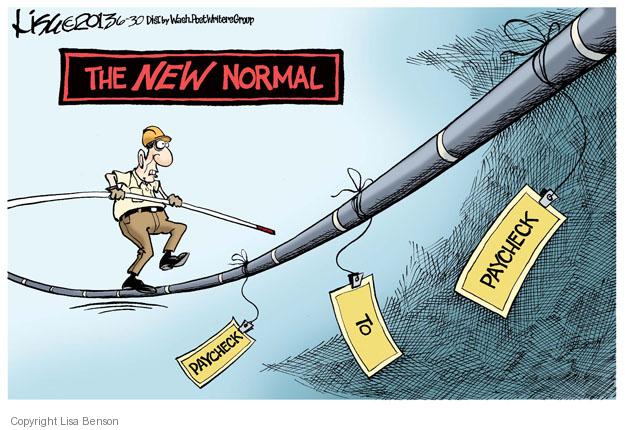QUOTE OF THE DAY
Bloomberg: Dirtiest U.S. Coal Becoming Most Popular on EPA Rules
The dirtiest coal in the U.S. is becoming the most popular, thanks to tightening emission standards forcing power plants to reduce pollutants.
Demand for the fuel from the Illinois Basin in President Barack Obama’s home state climbed last year to the highest level since 1990 as sales of nearby Appalachian coal dipped and consumption of the product from Powder River Basin mines inWyoming grew at a slower pace.
Illinois basin coal has greater sulfur content than the other coals, and either costs less or has a higher heat content, meaning it’s sought after by utilities forced to install scrubbers in their power plants by a succession of federal laws and Environmental Protection Agency rules. Its share of U.S. production will climb to 20 percent by 2040 from 13 percent currently, according to the Energy Information Administration.
Chicago Tribune: Feds: Grant fraud included $10K bonus to cover up sexual tryst
A former top state public health official and a Chicago businessman who got caught in a sexual tryst quickly steered a $10,000 bonus to the person who walked in on them as part of a state grant fraud scheme, federal prosecutors allege.
The revelation surfaced in court papers on the eve of a money-laundering trial that is part of an ongoing federal investigation into alleged abuse of social service and faith-based grants at the Illinois Department of Public Health and other agencies dating to the tenure of now-imprisoned former Democratic Gov. Rod Blagojevich.
Leon Dingle and wife Karin Dingle are charged with money laundering, mail fraud and conspiracy to defraud after prosecutors alleged that as much as $3.7 million of the grant money designated to fight cancer and AIDS instead helped pay for luxury cars, yacht club expenses and vacation getaway spots in Savannah, Ga., and Hilton Head, S.C. Both Dingles have pleaded not guilty.
Bloomberg: Still Missing: 3.9 Million Prime-Age Jobs
Today’s U.S. jobs report, which showed nonfarm payrolls increasing by a meager 142,000 jobs and the unemployment rate falling 0.1 percentage point to 6.1 percent in August, will undoubtedly rekindle a familiar debate: How much more should the Federal Reserve do to put people back to work?
Given the scant evidence of inflationary pressure and the still-woeful state of the job market, it’s preferable to err on the side of doing too much.
An unemployment rate of 6.1 percent doesn’t sound especially woeful — but that’s just one indicator, and it’s not the most revealing. Consider, for example, how far employment among people in their prime working years remains from “normal,” or the level that prevailed before the last recession. As of August, about 76.7 percent of people aged 25 to 54 were employed, according to seasonally unadjusted data from the Bureau of Labor Statistics. That’s a significant improvement over August 2011, when the employment-to-population ratio was at a low of 75 percent (see chart). But it’s still about 3.9 million jobs short of 79.8 percent, the average ratio over the 10 years through 2007.
Next City: The Steep Cost of Pensions in 10 Cities
As I mentioned earlier this week in “Which Cities Should Be Most Worried About Pension Funds?,” pensions now exceed outstanding debt as the largest type of state and local government liability. Cities are facing the repercussions of kicking the can down the road by not sticking to payment schedules and maneuvering the actuarial science behind forecasting liabilities. Yet most politicians are reluctant to tackle this crisis. (In fact, Next City’s recent Forefront “This Woman Has a Solution to America’s Pension Problem,” profiles Rhode Island gubernatorial candidate Gina Raimondo, in large part, because when she was the state’s general treasurer, “she opted to take the lead on an incipient problem that many of her predecessors had happily ignored: a desperately underfunded pension system.”)
To further drill down into just how much money we’re talking about, I looked at a reportfrom Morningstar Municipal Credit Research that calculates the burden of underfunded pensions in America’s 25 most populous cities. The study’s “median aggregate unfunded actuarial accrued liability (or UAAL) per capita” formula shows the amount residents would have to fork over to make their public pension funds sound. The number folds in municipal pension debts as well as those for state, county and other overlapping jurisdictions (such as school districts). Why is it crucial to take all of those into account? Well, Washington, D.C. is the only city among the 25 to be overfunded — because it benefits from not having overlapping jurisdictions. Charlotte and Memphis have the highest funding ratio because they are supported by strong state pension systems. Here’s a snapshot of what the pension crisis means for residents for 10 cities.
Chicago Sun Times: Gov OKs liquor sales at West Side store owned by Ald. Burke ally
Gov. Pat Quinn has signed legislation allowing Pete’s Fresh Market to continue selling beer, wine and spirits at its new West Side store, though a church next door to the grocery had objected to liquor sales there and urged him to veto the measure.
Quinn spokeswoman Katie Hickey said Quinn decided it’s “in the community’s best interest to sign the bill.”
Pete’s — which has made tens of thousands of dollars in campaign contributions to Ald. Edward M. Burke (14th), a top Quinn supporter — started selling liquor at its store at 2333 W. Madison in June under a “contingent” license granted by Mayor Rahm Emanuel’s administration. The license required Pete’s to get an exemption from an Illinois law that bans liquor sales within 100 feet of churches or schools — or lose its city liquor license.
Reason: Food Trucks Have Turned the Corner
Food truck cuisine has often been about pushing boundaries. Think Korean tacos.
But how about a cannabis-infused food truck? Earlier this year, NPR reported on the THC-infused pulled-pork sandwiches cooked up by a Denver food truck.
Sound like a new era for food trucks? While cannabis carnitas may not be coming to a food truck near you anytime soon, I do think we’ve entered a new era in American food trucking.
Fox Business: Tesla Needs $3B in Tax Breaks for New Battery Factory
Nevada looks to be the winner for Tesla Motors’ (TSLA) new $5 billion battery factory, but the win comes at a cost for state taxpayers.
Tesla is seeking up to $3 billion in new tax breaks to help fund about half of its cost for the new battery factory, which Tesla has already disclosed in regulatory filings would be located outside Reno, Nev., about 235 miles from its auto assembly plant in the San Francisco Bay area.
“The total capital expenditures associated with the gigafactory through 2020 are expected to be $4-5 billion (sic), of which approximately $2 billion is expected to come from Tesla,” the company said in its latest regulatory filings.
Wall Street Journal: On the School-Choice Barricades
‘It’s like a tale of two Americas on school choice,” says Kevin Chavous. There’s the status quo that includes the teachers unions and their allies. “And then there’s the other America”—those “who have to suffer every day because their kids aren’t getting the education they deserve.”
By his lights, school choice is a war between the “haves” and “have-nots.” “The only people fighting educational choice are the people who have educational choice,” notes the former Washington, D.C., councilman.
Mr. Chavous ought to know, because for four years he has battled on the front lines of education reform as a founding board member and executive counsel for the nonprofit American Federation for Children (AFC). The organization publicly lobbies for school choice, and in particular focuses on private-school scholarship programs that typically receive less charitable support than do charter schools. Its political action committee battles to elect pro-choice lawmakers in the states.
Barrons: Moody’s Sees ‘Daunting Pension Challenges’ For Illinois
In case anyone’s forgotten that the state of Illinois has some pension-funding problems, Moody’s reminds us today with a new report detailing how the state and its local governments “face among the nation’s most daunting pension challenges.” From Moody’s:
The severity of pension problems could ease if 2013 state pension reform legislation is upheld by the Illinois Supreme Court. Even if these and similar local-plan reform laws are allowed, unfunded pension liabilities for both the State of Illinois (A3 negative) and some local governments have grown so large that fully paying them down will prove challenging for many years.
The rating agency says Illinois’ legal pension protections “appear to allow little flexibility” while key court decisions loom:
CARTOON OF THE DAY

